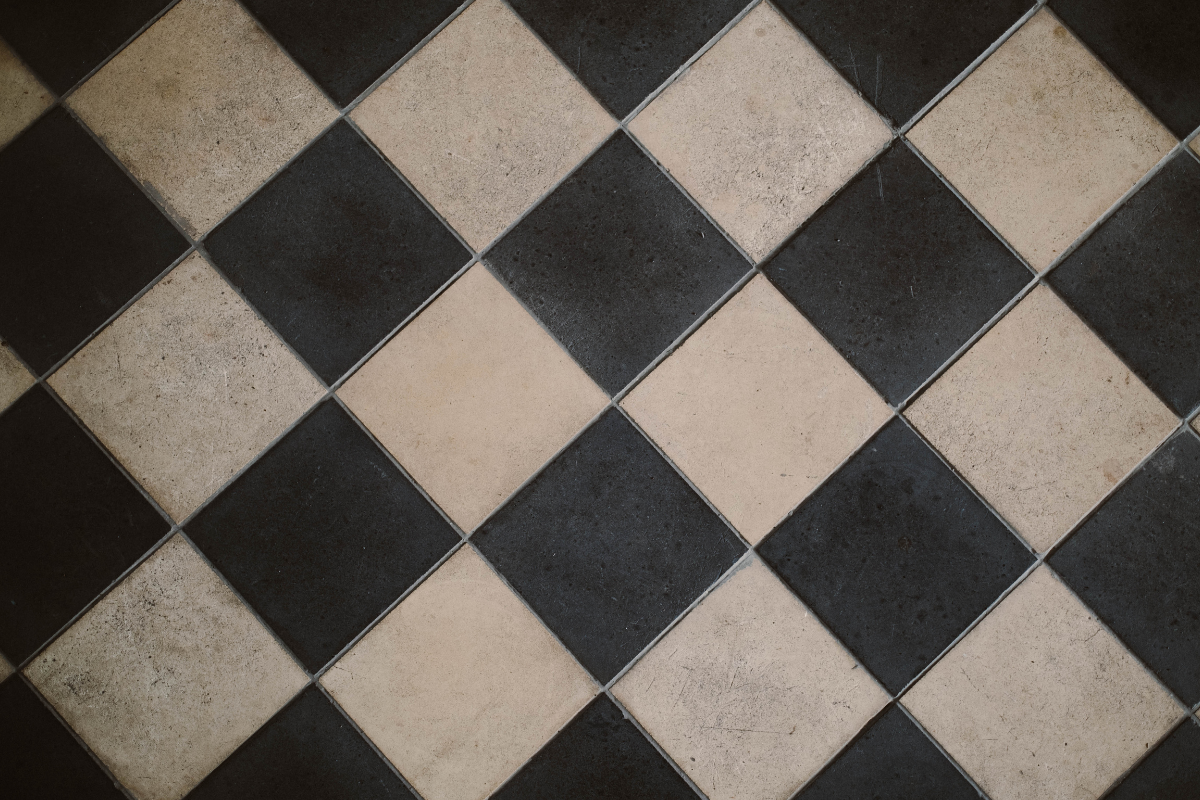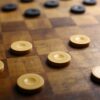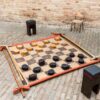Notation of Checkers Games
Notation, which allows you to save a game of checkers, is crucial for several reasons:
- Firstly, it allows for documenting how a tournament game unfolded. In some specific situations (such as accidental displacement of pieces on the board or suspicions of cheating), it enables players to recreate the position and helps the arbiter make the right decision,
- Secondly, notation provides a means for honing one’s checkers skills using various tools, including resources like this book,
- Thirdly, it offers the opportunity to analyze both your own games and those of others from various tournaments. This facilitates drawing conclusions and avoiding the repetition of the same mistakes. Furthermore, having a proper database (a history of played games) allows for thorough preparation against specific opponents.
I. Preparing the Game Board

Let’s take another look at the numbering of the checkerboard. In tournaments where game notation is mandatory, proper preparation of the board and arrangement of the pieces are particularly important. It is absolutely essential to remember to place the white pieces on the higher numbers (from 50 to 31) and the black ones on the lower numbers (from 1 to 20). Failure to adhere to this rule would result in an incorrect notation of the entire game.
II. Notating Moves
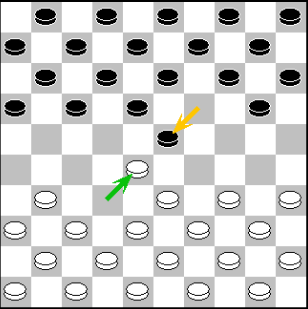
Maintaining notation requires recording all moves of the game in the order they occur.
A complete notation includes the move number and its sequence. To notate the move of the piece, we write down the square it moved from and the square it moved to, separated by a hyphen. The regular move is usually indicated by a single dash. In most checkers games, the play starts with White’s 1. 32-28. Let’s assume Black responds with 1… 19-23. These two moves constitute the complete first move of the game.
III. Notating Captures
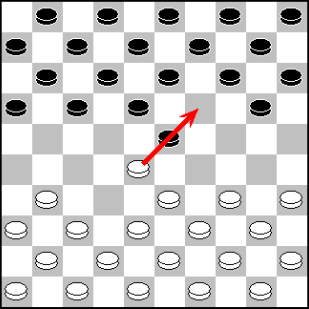
Blacks forced the white piece to capture. Capturing is notated similarly to a move, with the exception that the path is indicated not by a dash but by an ‘x.’ So the second move by whites would be recorded as follows: 2.28×19. Let’s assume that blacks respond with 2…14×23. We have now completed two full moves of the game.

How do you write multiple captures in checkers notation?
- In the case of capturing multiple pieces, the notation looks the same, and you only notate the starting and ending square of the capture.
- An exception to this rule is multiple capture by a king, where you can reach the same final square through different paths by capturing different pieces.
VI. Special Multiple Capture of the King
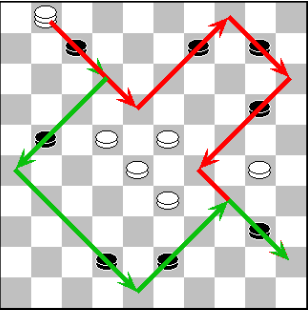
White: 33, 30, 28, 23, 22, 1 (king)
Black: 7, 9, 10, 20, 21, 40, 42, 43
In this particular case, the white king can capture 5 black pieces in two different ways: 1 x 12 x 26 x 48 x 34 x 45 or 1 x 18 x 4 x 15 x 29 x 45 In that case, you should notate the entire sequence of captures, indicating the successive squares through which the king captures the pieces.
V. Tournament Score Sheet
A tournament score sheet is an essential tool in the game of checkers, allowing for precise notating of the game’s progress and result. It serves as not only important documentation of the match but also a valuable source of information for analysis, learning, and resolving any disputes. Thanks to tournament score sheets, players can meticulously notate each move, the time spent on moves, and accurately document the final outcome.
What Does the Score Sheet Contain?
A standard tournament scoresheet for notating a game typically includes the following fields to be filled out before the start of the match:
- The tournament name,
- The date,
- Number of the round,
- The name and surname of the player playing with the white pieces,
- The name and surname of the player playing with the black pieces.
Below the fields or table with the above data, there is a table used for notating the moves of the the game. The successive moves are numbered, and the moves of the white and black players are notated in separate columns.

What happens after the end of a game of checkers?
After the end of the game, players are required to complete the scoresheet by filling in the following fields:
- Result,
- Time,
- Signature.
After filling in all the information and signing, the original score sheets are handed over to the referee. Players keep copies of the records.
Develop Your Skills
Undoubtedly, the ability to use notation is an important asset for every checkers player, regardless of their skill level. Therefore, we encourage you to delve into the intricacies of notation and use it as a tool to improve your skills and develop in the world of checkers.


